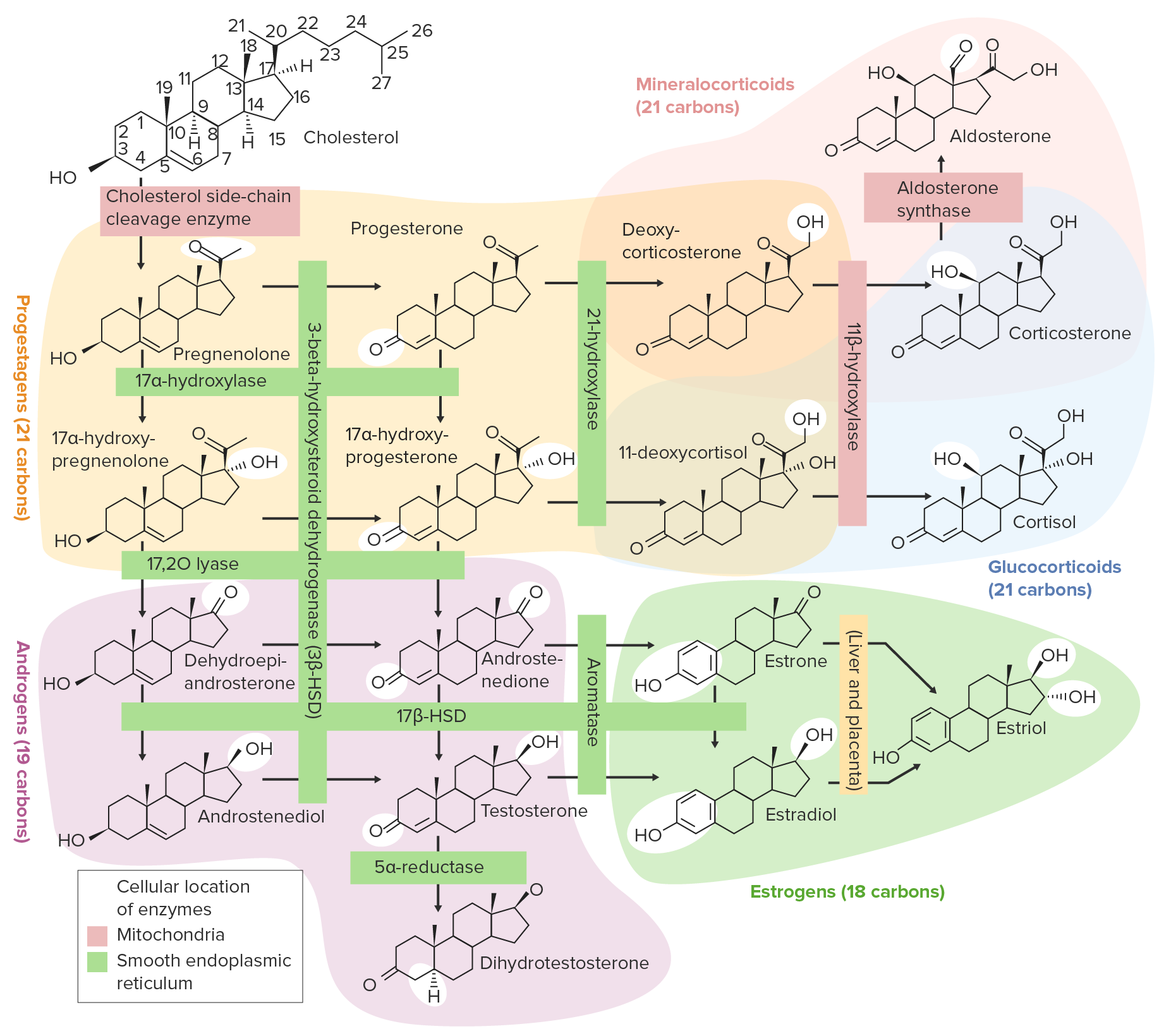Playlist
Show Playlist
Hide Playlist
Androgen Receptor Antagonists
-
Slides Reproductive Pathology Differential Diagnoses.pdf
-
Reference List Pathology.pdf
-
Download Lecture Overview
00:02 Our topic, androgen receptor antagonist. We'll take a look at the following. Flutamide used with leuprolide with prostate carcinoma. Can you tell me what the mechanism of action of Flutamide is? It’s an androgen receptor antagonist. Along with it, you might be thinking about giving leuprolide which is an agonist. Understand what the topic is. Understand why we’re doing this leuprolide by giving an infusion of constitutive, not pulsatile GnRH. At first, you put your foot on the accelerator and you speed up LH and FSH release. But ultimately with downregulation, you'd find a decrease in LH and FSH. In the meantime, flutamide will be blocking androgen receptors. 00:44 This is then referred to as being your chemical castration. Flutamide is a competitive inhibitor of testosterone at the nuclear receptor. Leuprolide is a GnRH agonist. Sustained administration of leuprolide, what does it do? It blocks the feedback and thus, resulting in perhaps an effective treatment or description that we called as chemical castration. Spironolactone is specifically an androgen receptor blocker. Now, this you find to be interesting. Spironolactone, why would you use this in congestive heart failure? Why would you want to use this in a patient with too much androgen such as polycystic ovarian syndrome? In congestive heart failure, it is what kind of antagonist? Aldosterone antagonist. If you inhibit aldosterone activity in congestive heart failure, that is an excellent thing because it inhibits remodelling thus decreasing mortality. 01:39 Aldosterone antagonist, congestive heart failure is the mechanism of action that you're going for there. Here in this section, we’re dealing with androgen receptor antagonist. Therefore, spironolactone will be used in those conditions in which the patient has too much androgen, perhaps, perhaps, polycystic ovarian syndrome. 5α-reductase inhibihtor, remember finasteride or another one called dutasteride? The suffix, -steride will help you. What does it do? It inhibits your 5α-reductase therefore you decrease the production of DHT. Why would you want to use this? You want to decrease your benign prostatic type of hyperplasia. 02:24 Therefore, it is used in a patient that is exhibiting two things. Number one, finasteride, you should be thinking about BPH, benign prostatic hyperplasia. I gave you that silly story about me in experiencing baldness. So therefore, it could be used to inhibit DHT production when you’re dealing with follicular growth inhibition.
About the Lecture
The lecture Androgen Receptor Antagonists by Carlo Raj, MD is from the course Reproductive Hormone Disorders.
Included Quiz Questions
Which of the following statements is NOT true?
- Flutamide is a competitive cytoplasmic inhibitor of the testosterone receptor.
- Leuprolide is a GnRH agonist.
- Leuprolide and flutamide are antiandrogens.
- Spironolactone is an antiandrogen.
- Finasteride is 5-alpha-reductase inhibitor.
Which of the following drug–disease combinations is INCORRECT?
- Dutasteride and prostate cancer
- Spironolactone and congestive heart failure
- Leuprolide and prostate cancer
- Spironolactone and PCOS
- Flutamide and prostate cancer
Customer reviews
5,0 of 5 stars
| 5 Stars |
|
5 |
| 4 Stars |
|
0 |
| 3 Stars |
|
0 |
| 2 Stars |
|
0 |
| 1 Star |
|
0 |




